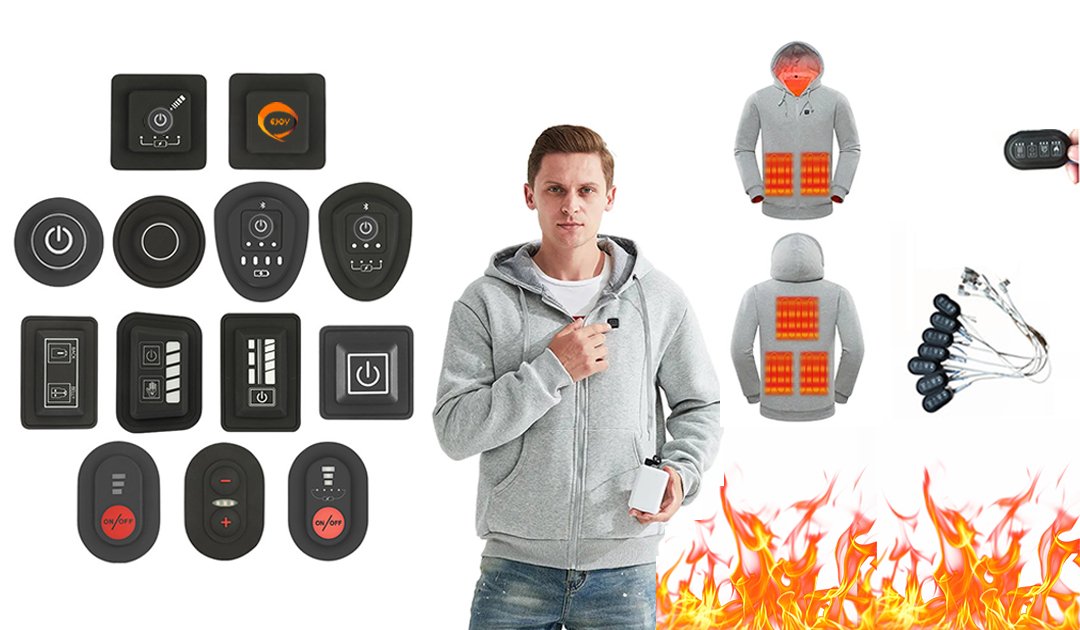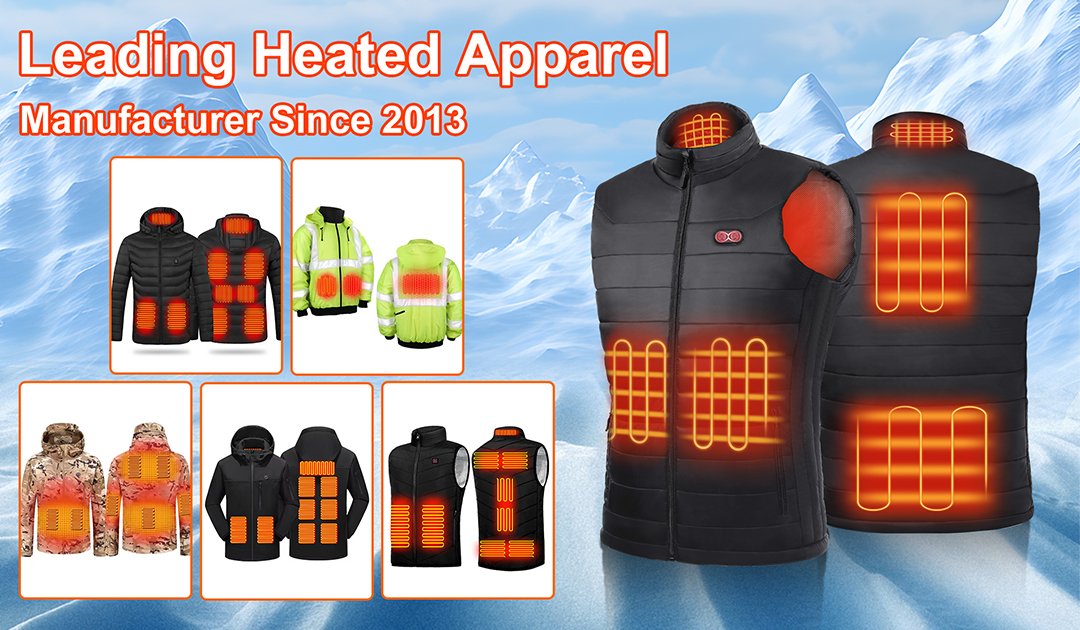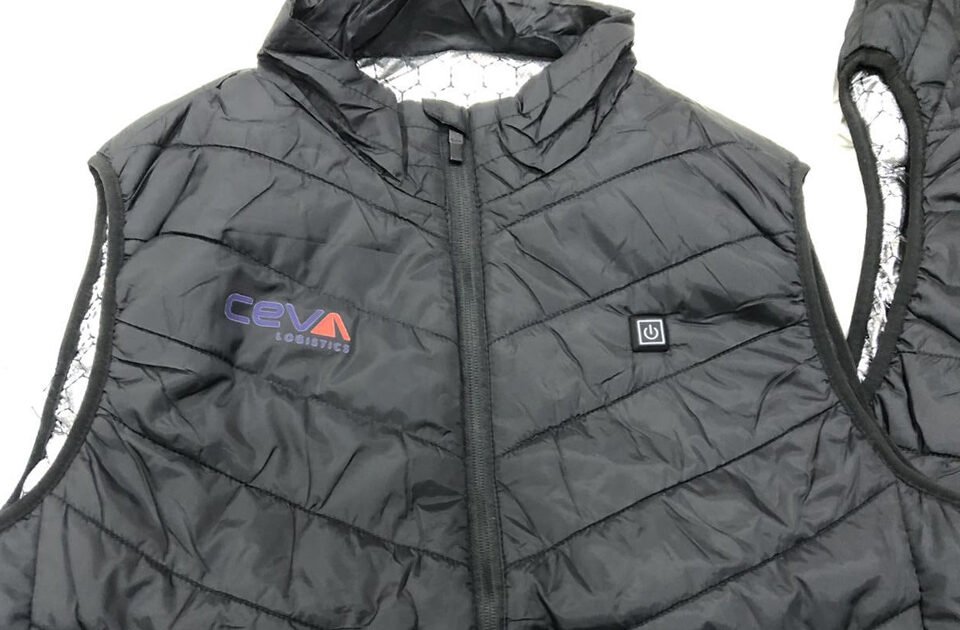The Risks of Customizing Heated Clothing: What You Need to Know
When it comes to heated clothing, customization can seem like the perfect way to make your product stand out. You get to choose the materials, the design, and all the little details that make your brand unique. But while customization offers many benefits, it also comes with its own set of risks. If you’re not careful, the choices you make could lead to problems down the road. Let’s walk through some common pitfalls you might encounter when customizing heated clothing and how to avoid them.
1. Picking the Wrong Heating Material
Imagine you’re designing a heated vest. You’re excited about the options and decide to go with a particular heating material because it’s cost-effective. But there’s a catch—this material isn’t ideal for a vest. It might work for other products, but when used in a vest, it just doesn’t hold up. Over time, the vest loses its durability, and you’re left with unhappy customers.
To avoid this, always consider the specific needs of the product you’re creating. Not all heating materials are created equal, and what works well in one type of clothing might not be suitable for another. It’s important to choose a material that not only fits your budget but also meets the demands of the product.
2. Choosing the Wrong Switch
Now let’s say you’re working on a heated jacket. You think a simple on/off switch will do the trick, but later realize that customers want more control. They’d prefer to be able to adjust the heat in different areas of the jacket—maybe they want to keep their chest warmer but don’t need as much heat on their back. Without the ability to control these zones, customers might feel disappointed with the product.
The lesson here? Think about how your customers will use the product. A switch that controls multiple zones can make a huge difference in user experience. It’s a small detail, but it can greatly impact how satisfied your customers are with the final product.

3. Missing Key Heating Areas
Imagine you’ve designed a fantastic heated jacket, but you’ve overlooked something important: your customers wanted heat in the arms as well. Without this feature, the jacket doesn’t keep them as warm as they’d hoped. They might like the jacket, but they don’t love it.
When customizing heated clothing, always consider where the heat is most needed. If customers expect warmth in specific areas, make sure those zones are covered. Taking the time to plan the heating layout carefully will ensure that the product meets customer expectations.

4. Getting the Battery Size Wrong
Batteries are like the heart of your heated clothing—they keep everything running. But choosing the wrong battery size can be a real pain. If you go with a battery that’s too large, it could make something like heated gloves heavy and uncomfortable. On the other hand, if the battery is too small, it won’t last long, and customers will have to recharge it frequently, which can be frustrating.
The key is to find the right balance. You want a battery that’s powerful enough to last, but not so big that it becomes a burden. It’s a tricky balance to strike, but getting it right can make a big difference in how your product is received.
5. Choosing the Wrong Voltage
Here’s another potential pitfall: choosing the wrong voltage for your heated clothing. For everyday items like heated jackets or vests, a 5V or 7.4V system usually works well. It’s compatible with common power banks, which makes it easy for customers to find replacement batteries. However, for extreme conditions—think temperatures well below freezing—you might need to step up to a 12V system to ensure the clothing provides enough warmth.
The bottom line? Match the voltage to the intended use of the product. If your clothing is meant for milder climates, a lower voltage will suffice. But for more extreme conditions, a higher voltage might be necessary to meet customer needs.
6. Deciding Whether to Add Insulation
Insulation is another factor that can make or break your heated clothing. Let’s say you’re designing an outer jacket. If you skip the insulation, the heat might escape too quickly, leaving the wearer feeling cold. On the flip side, if you’re making an inner layer, too much insulation could make it bulky and uncomfortable.
Think about where and how the clothing will be worn. For outerwear, insulation is often essential to keep the heat in. But for inner layers, you might want to keep things light and breathable.

7. Selecting the Right Fabric
Fabric choice is crucial. Imagine you’re creating a jacket for outdoor use, but you choose a fabric that isn’t windproof or waterproof. What happens? The jacket might keep the wearer warm, but as soon as they step into the wind or rain, they’re cold and wet. Not exactly the experience you want to deliver.
For products meant to be worn in tough conditions, make sure to choose fabrics that can stand up to the elements. This might mean spending a bit more, but it’s worth it to ensure the product performs as expected.

8. Picking the Right Wires and Connectors
Finally, let’s talk about the wires and connectors that keep everything running smoothly. Choosing the wrong ones can lead to big headaches. For example, if the wires are too thin or don’t have enough strands, they might break after a while, leaving the product useless. But if the wires are too thick, they could make the clothing bulky and uncomfortable.
And it’s not just about the thickness—think about the environment where the clothing will be used. If it’s going to be worn in extreme cold, you’ll need wires and connectors made from materials that can handle low temperatures. Otherwise, they could stop working just when your customer needs them the most.
9. Getting the Size and Fit Wrong
Imagine you’ve designed a heated jacket that looks fantastic on paper, but when customers receive it, the fit is off. Maybe the sleeves are too long, or the chest is too tight. This can make the jacket uncomfortable to wear and might even affect how well the heating elements work.
When customizing heated clothing, it’s crucial to get the sizing and fit just right. This means paying attention to details like sleeve length, chest width, and overall fit. A poorly fitted garment not only looks bad but can also impact the effectiveness of the heating elements. Make sure to work closely with your manufacturer to ensure the sizing is accurate and meets your customers’ expectations.
10. Production and Delivery Delays
You’ve nailed the design, chosen the perfect materials, and the orders are rolling in. But then, disaster strikes—your production schedule gets delayed. Maybe it’s because the customization process takes longer than expected, or perhaps there’s a hiccup in the supply chain. Whatever the reason, these delays can wreak havoc on your market plans.
To avoid this, it’s essential to plan your production and delivery schedules carefully. Build in some buffer time for potential delays and communicate clearly with your manufacturer about deadlines. This way, you can keep your customers happy and avoid any last-minute stress.
Conclusion
Customizing heated clothing is a great way to create products that stand out in the market, but it’s not without its challenges. From picking the right materials and components to ensuring the product works as intended, there are plenty of potential pitfalls along the way.

This is where EJOY comes in. With over 11 years of experience in designing, developing, and manufacturing heated clothing, we’ve seen it all. We know what works and what doesn’t, and we’re here to help you avoid these common mistakes. By working closely with us, you can create custom heated clothing that not only meets your customers’ needs but exceeds their expectations. Let us help you bring your vision to life—without the headaches.




